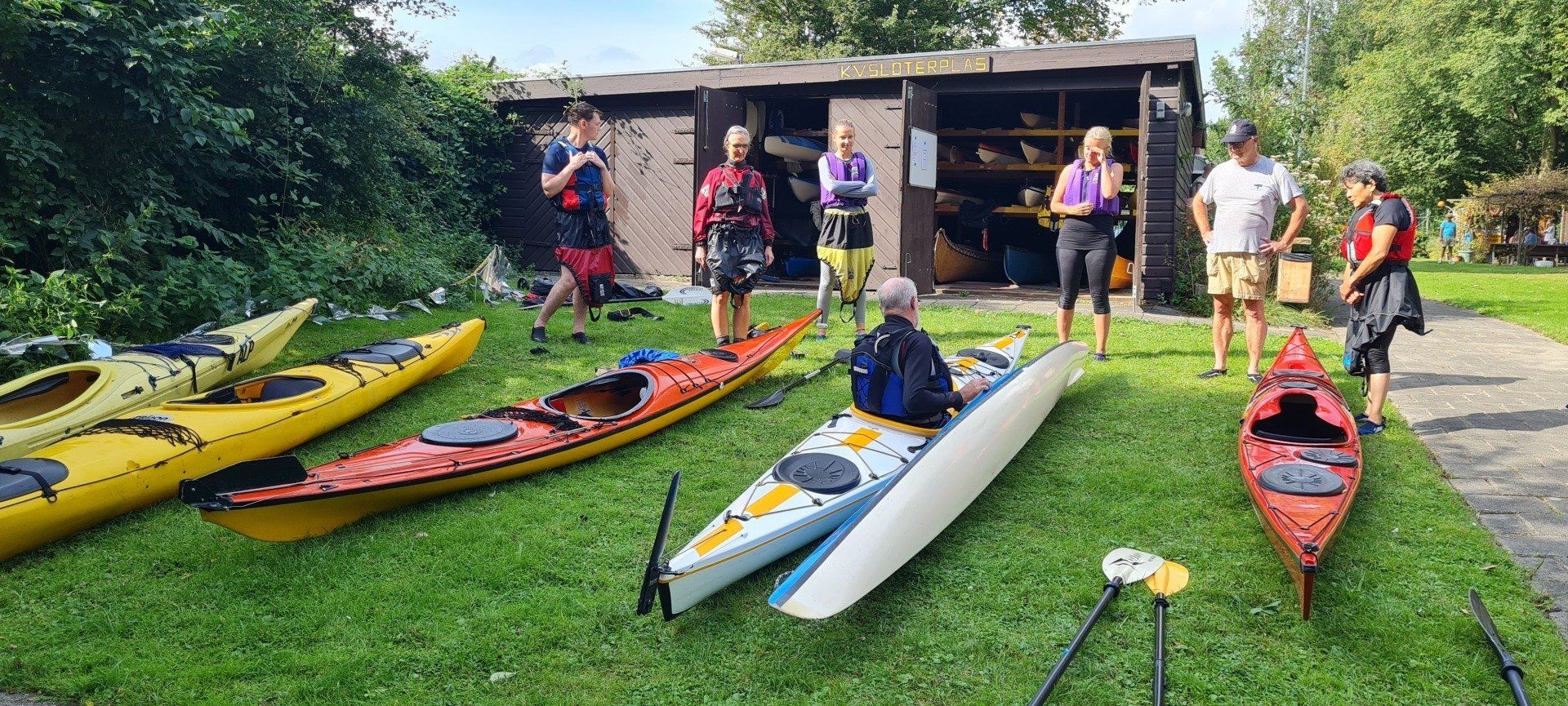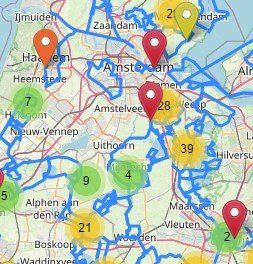www.kanoverenigingsloterplas.amsterdam
Our neighbours
Blue-green algae: Not an algae but a bacterium:
This information comes from:
"Blue-green algae are bacteria that behave like algae. They are called cyanobacteria because of the blue-green cyan pigments found in them, but blue-green algae can also have a red-brown color. The cyanobacteria normally occur in fresh, brackish and salt water and form a biomass under influence of light, carbon dioxide and nutrients in the water. Many types of blue-green algae produce substances that are poisonous to humans and animals. The poison is in the cell of the bacteria, the toxins are not released into the water."
What happens if you swim in water with blue-green algae?
"In most cases, the toxins in blue-green algae cause skin and eye irritations, fever, stomach and intestinal complaints such as diarrhea, vomiting, headache, and swelling of lips and eyelids. This can take five days, the complaints usually disappear on their own. The toxins you ingest through the mouth. Children often ingest a little more water when swimming, and they are more sensitive to the substances. We do not really know what the incidence is, how often people in the Netherlands become ill from blue-green algae. It may be that people don't know it themselves. If they are ill due to intestinal problems, they may blame it on the barbecue rather than a day of swimming."
Web pages with more information about Blue-green algae.
Canoeing and Blue-green algae.
In times of blue-green algae, the motto 'I canoe to stay dry' is absolutely true. An experienced canoeist does not expect to just start swimming, so just keep sailing.
Do: After water sports, a good shower is now extra important to rinse the skin thoroughly.
Read the articles (you will find the links here) about blue-green algae.
Article from the Parool:Blue-green algae in the water, when can we swim again?
BY: CORRIE GERRITSMA JULY 30, 2018, 3:49 PM (Source: Het Parool)
According to Jasper Stroom of Waternet, this depends, among other things, on the weather and the location. "In a place where the blue-green algae can wash away, the water is more likely to be clean. But at the Sloterplas, for example, that is difficult, as it cannot wash out there. Over the past five years there has been little blue-green algae in the Sloterplas, but once they are there, They are persistent, experience shows."
Blue-green algae can be washed away more easily in the Amstel, but according to the ecologist, this requires a lot of rain first. "Only when so much rain falls that the polders start to drain water again, will the water in the Amstel, for example, flow properly again."
Big storm
Blue-green algae thrives at temperatures between 20 and 30 degrees. Stroom believes that the chance that the water temperature will drop in August is small, but the drop can be rapid in September. "In September the days become shorter and it is more difficult to keep the water warm, even in warm weather."
A heavy storm would be best to dispel blue-green algae. "Wind can certainly help. Blue-green algae are often slightly lighter than water and can float to the surface in stagnant water. When there is a strong wind, the blue-green algae also mixes with the deeper water and the concentration is lower."
The bitter conclusion: if we want to be able to swim in water without blue-green algae again, we first need a period of wind and rain.













